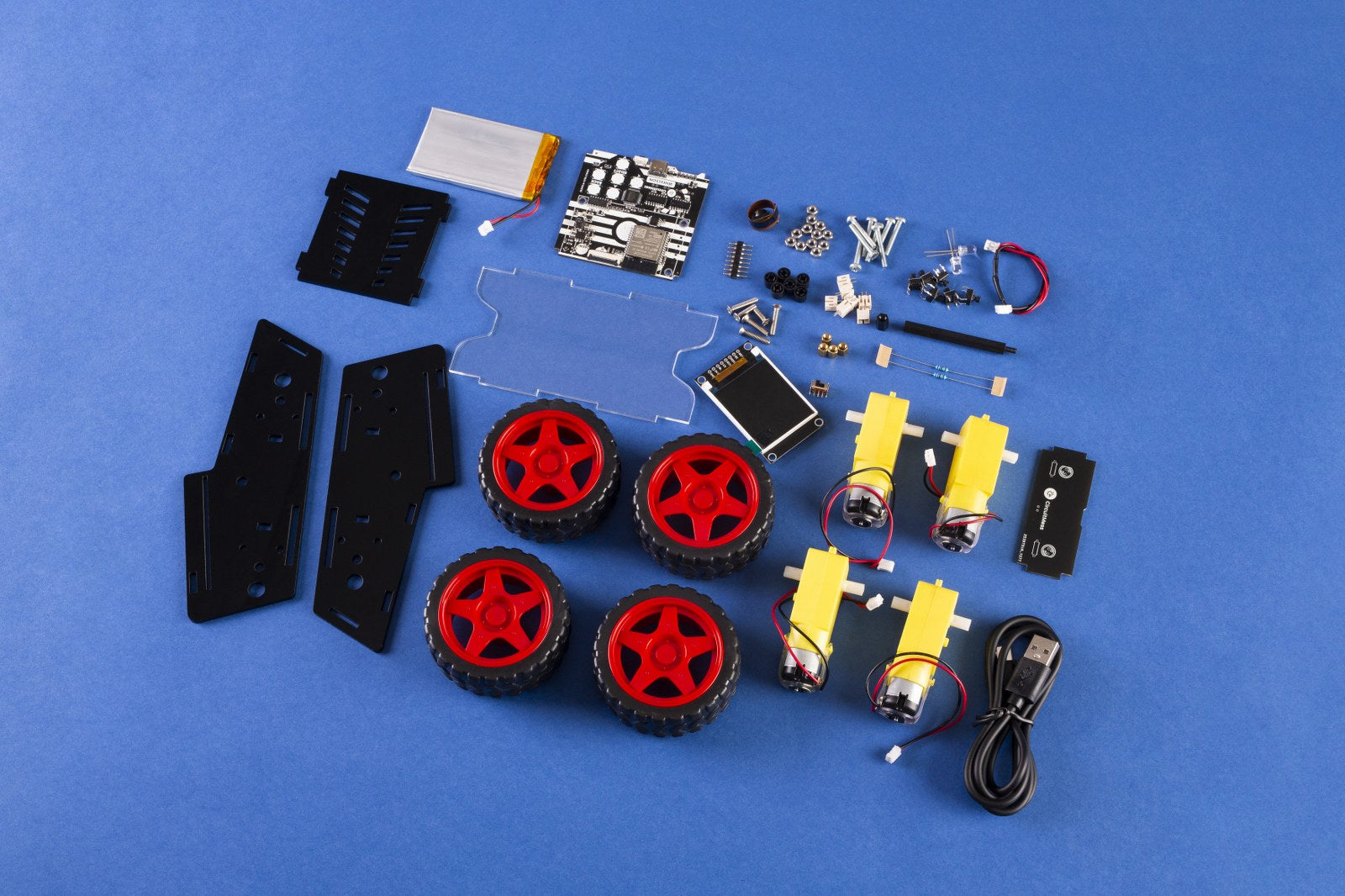
What Should A Science Kit Contain?
Read stories how our founder Albert turned his childhood passion into CircuitMess, and get exciting DIY project ideas you can do with your kids at home for free.
Table of content
Given the current rise in popularity of mathematical and natural sciences, there is now an abundance of science kits on the market. With so many alternatives available, it’s getting hard to distinguish the average quality science kits from those that will give you the best possible learning experience.
That being said, recognizing a good science kit is actually not that hard. Ultimately, the best STEM kits are the ones that meet the following three requirements.
1. Science kit should contain the best quality equipment

Imagine getting an educational science kit for your kid, only to realize that some of the included components are easily breakable, non-durable, and of poor quality.
Unfortunately, some manufacturers think they don’t need to ensure the best quality of the components because the product is intended for STEM beginners or kids.
What you should always do before purchasing a kit is pay attention to the quality of the equipment. You can do this by checking the product reviews or contacting the producer.
Simply try to make sure that the components contained in the kit are genuine and not low-quality versions of the elements that are used for actual scientific purposes.
2. Science kit should contain relevant learning materials

While the main point of a science kit is its hands-on experience, it is also essential to understand the theoretical concepts and facts regarding the activity you’re performing.
E.g., if you’re building an AI-powered DIY robot car, it would be beneficial to get some offline or online learning materials that will help you understand how this technology works.
Ensure that the kit you’re about to purchase provides you with more than just a cool experience without any scientific context.
3. Science kit should contain fun & simple instructions

It is crucial for any child or adult facing their first STEM project to have very engaging and easy-to-follow instructions. A poor build guide that lacks images or doesn’t explain all the steps adequately could ultimately discourage any beginner. It may even demotivate them from continuing their journey through the world of DIY.
One of the most important things you should check when choosing your kit is if it contains straightforward instructions. Make sure that those guidelines include lots of pictures, information about every component contained in the kit, and clear explanations of all the functions you need to perform throughout your build.
If you’re getting this kit for your kid, you might also check whether the design, colors, and the form of the instructions are something that would keep them engaged and interested.
PRO TIP: It’s always a good idea to check if the producer of the kit can provide you with some help and support in case you get stuck throughout your build process.
Requirements for a fun activity
So to recap, a proper science kit that will provide you with the best learning experience is one that has quality components, suitable learning materials, and easy-to-follow build instructions.
All things considered, if the science kit you’re checking out ticks all the mentioned boxes, we guarantee you that both you and your kid are in for a great learning experience.

Read stories how our founder Albert turned his childhood passion into CircuitMess, and get exciting DIY project ideas you can do with your kids at home for free.
Read more

What is STEM? A Fun and Future-Focused Way to Learn
The future demands adaptable and innovative minds. This guide breaks d...

Is Your Child Ready to Become a Space Explorer? (Here's How)
Your portal to space exploration. Build robots, code games, and unlock...

DIY Delights: 5 Easy Electronics Projects for Kids
Join thousands of parents inspiring their kids with these 5 easy elect...
